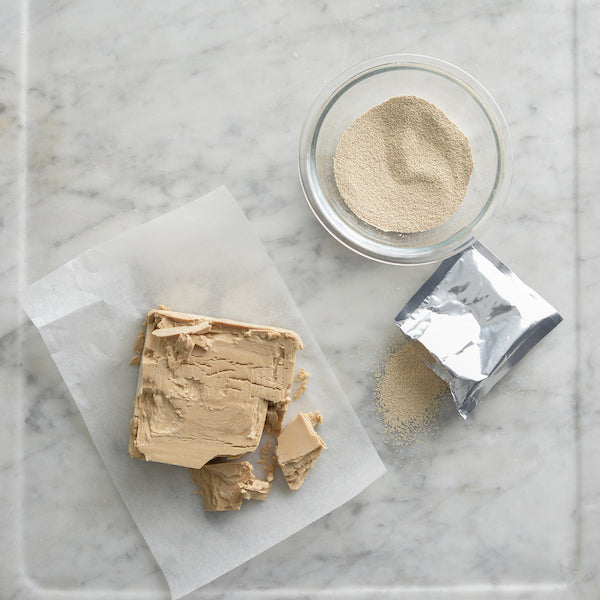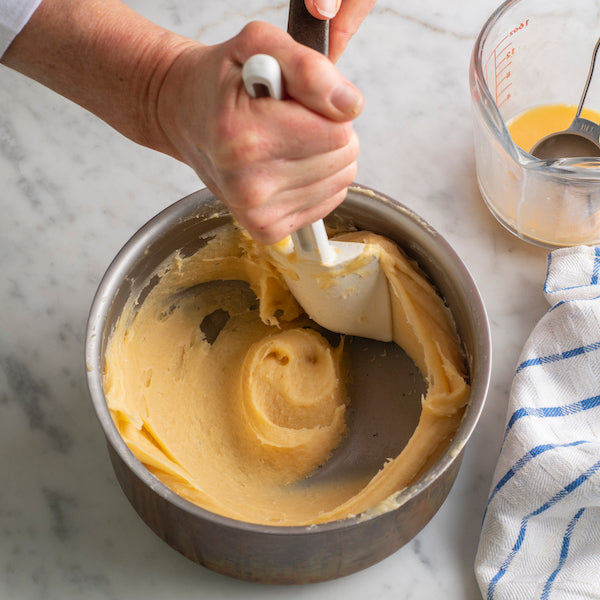BakeTips

Instant Dried Yeast vs Fresh Yeast
There are two main types of commercially available yeast used for making yeasted breads – instant dried yeast and fresh or compressed yeast. Dried yeast is reliable and convenient while I believe that fresh yeast can give a better texture and flavour, especially to rich yeasted breads. Fresh yeast is also great for doughs that require a long, slow proving time as it stays active for longer than dried yeast.
Instant dried yeast can be added directly to the other dough ingredients without the need to activate it first like fresh yeast. It is available in sealed individual sachets, which can be stored at room temperature, or sealed canisters that are best stored in the fridge or freezer once opened. Generally dried yeast will keep for a year or more – just check the used by date on the packaging.
Fresh yeast is generally sold by weight and is available from selected delicatessens, health food stores and bakeries. When using fresh yeast it will first need to be activated by before adding to the dry ingredients. To activate fresh yeast:
1. Crumble the yeast and dissolve it in a small portion of the lukewarm water or milk specified in the recipe’s ingredients list (for 14g fresh yeast add about 2 tablespoons of the water). It’s also a good idea to stir in a small portion of the flour (about 2 teaspoons) and sugar (about 1 teaspoon) to help activate it more quickly.
2. Then set aside in a warm, draught-free place for 5-10 minutes or until bubbles form on the top and the mixture is foamy.
3. Add the yeast mixture to the remaining lukewarm liquid before continuing with the recipe.
These two types of yeast are interchangeable in recipes, but remember that you need to use twice as much fresh yeast (by weight) than dry. Therefore, if a recipe asks for 7g dried yeast you will need to use 14g of fresh or compressed yeast and vice versa.







